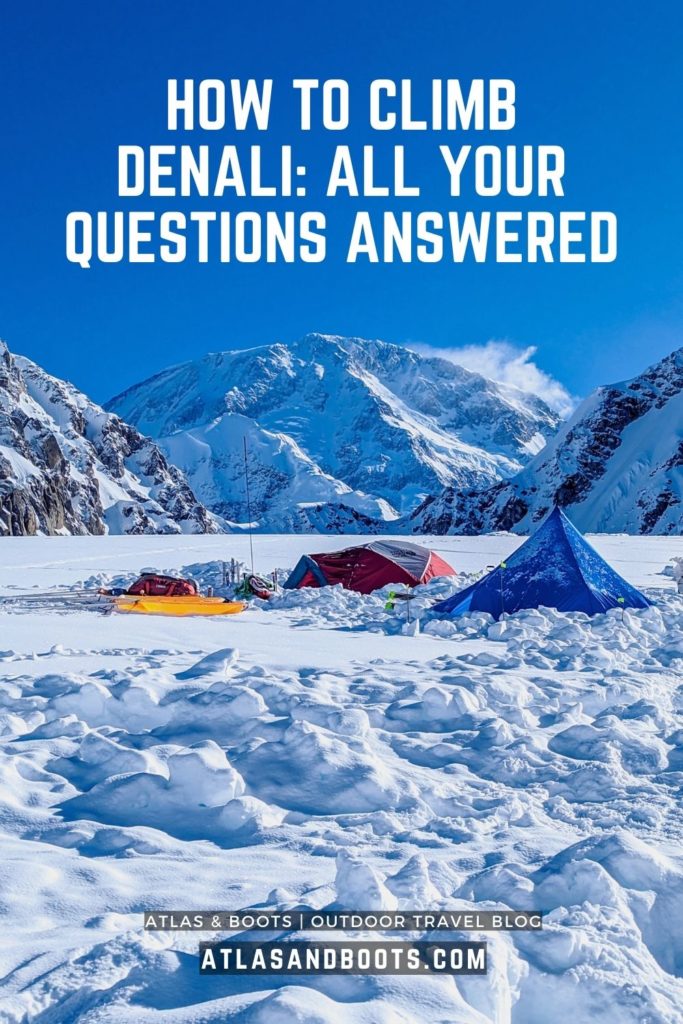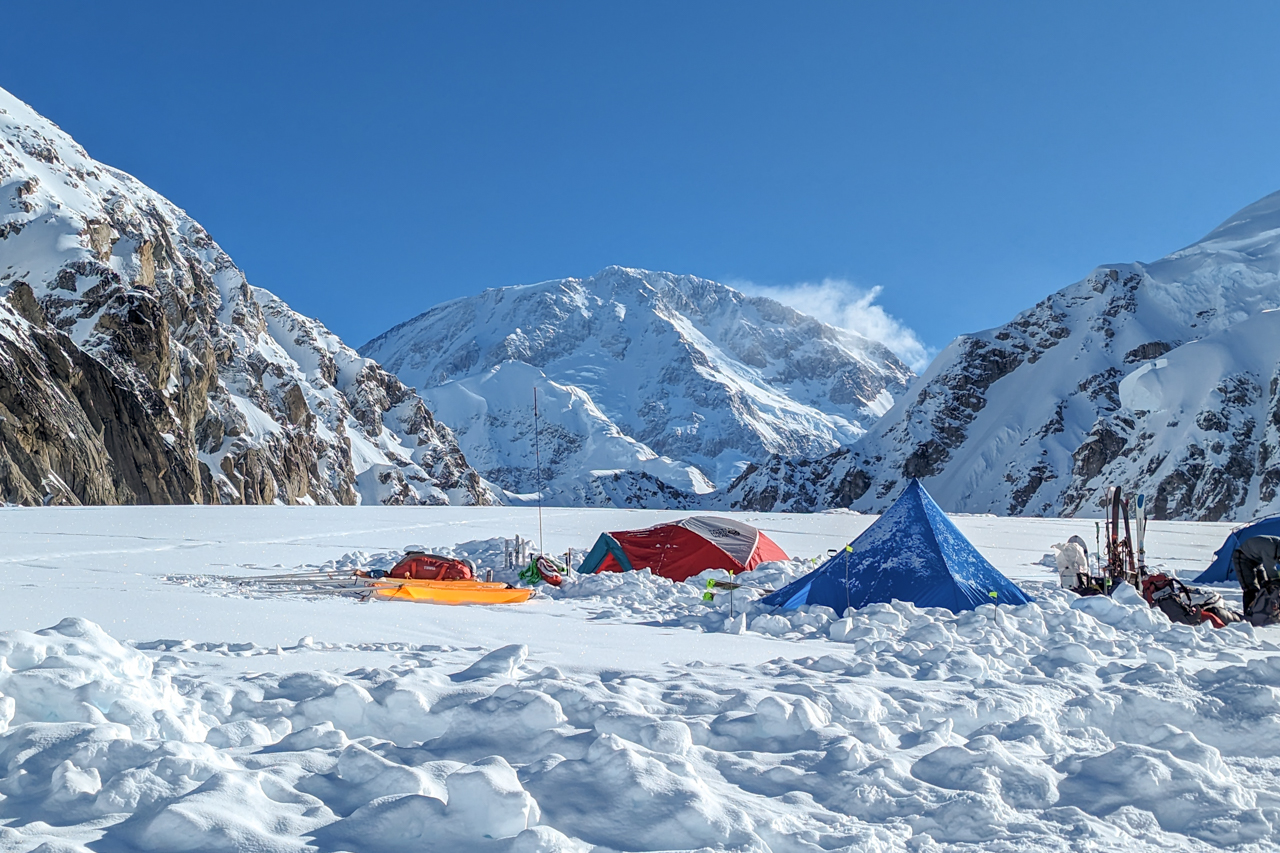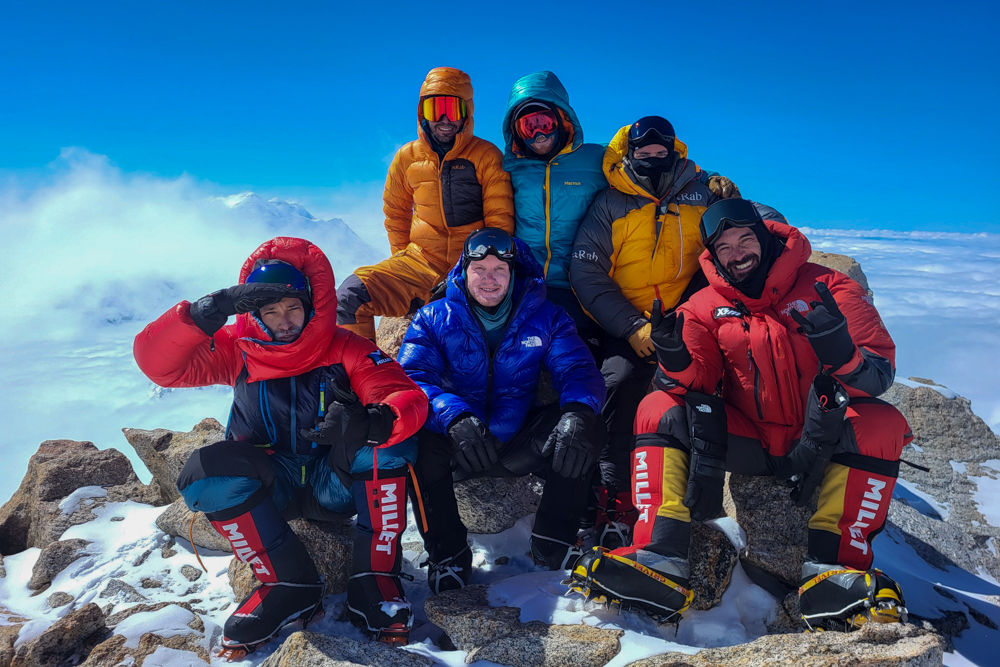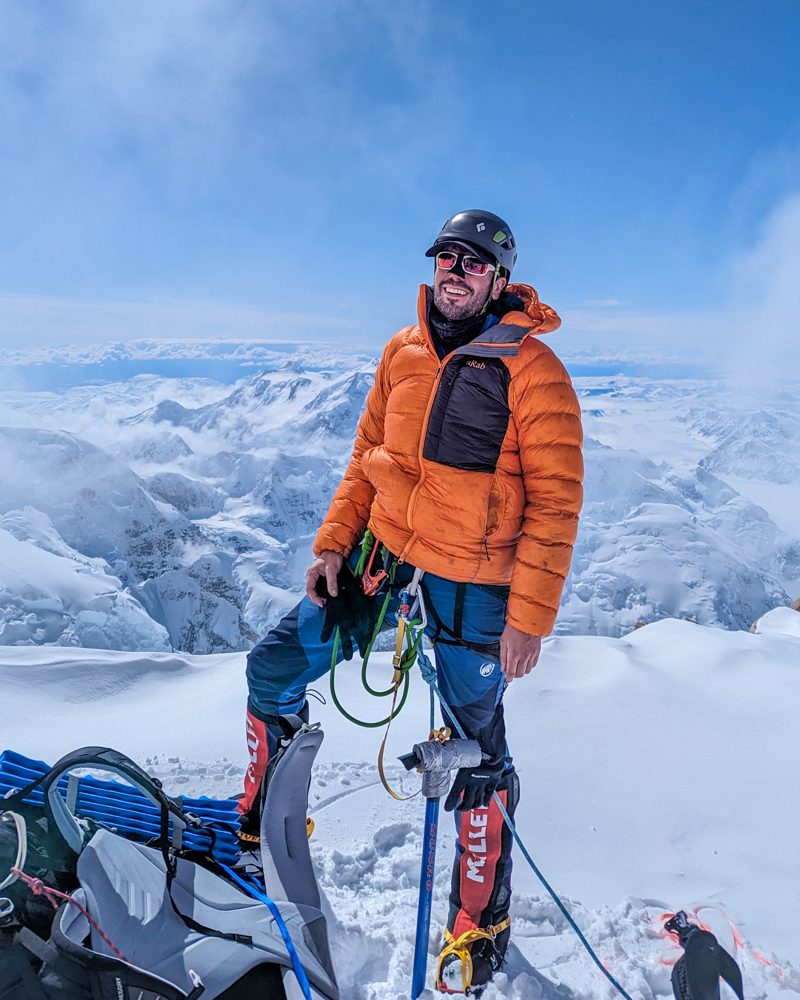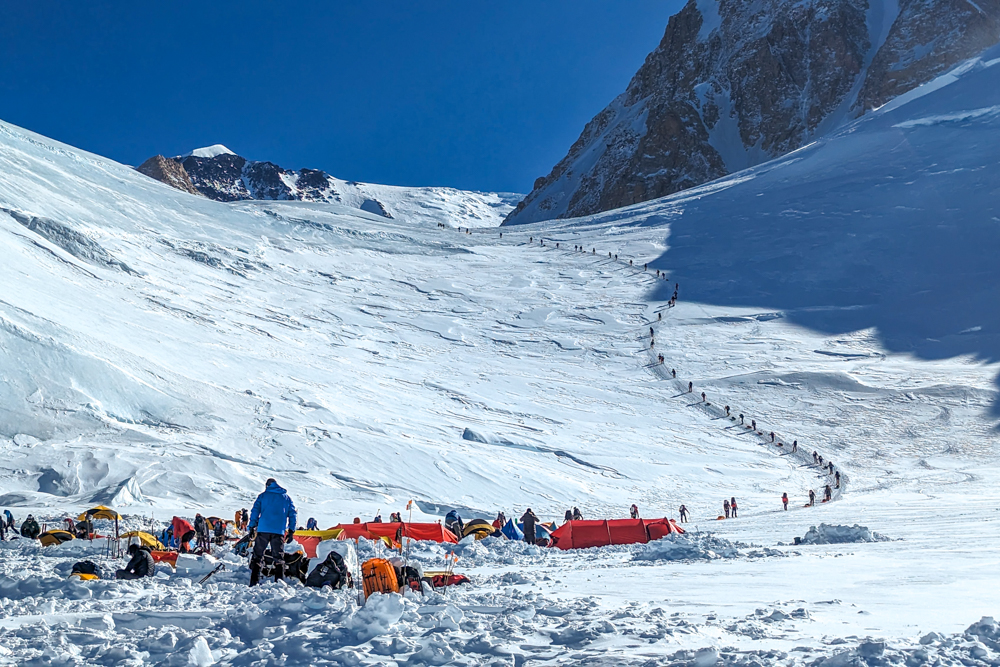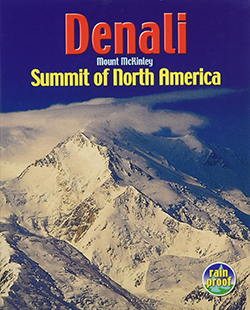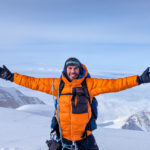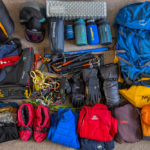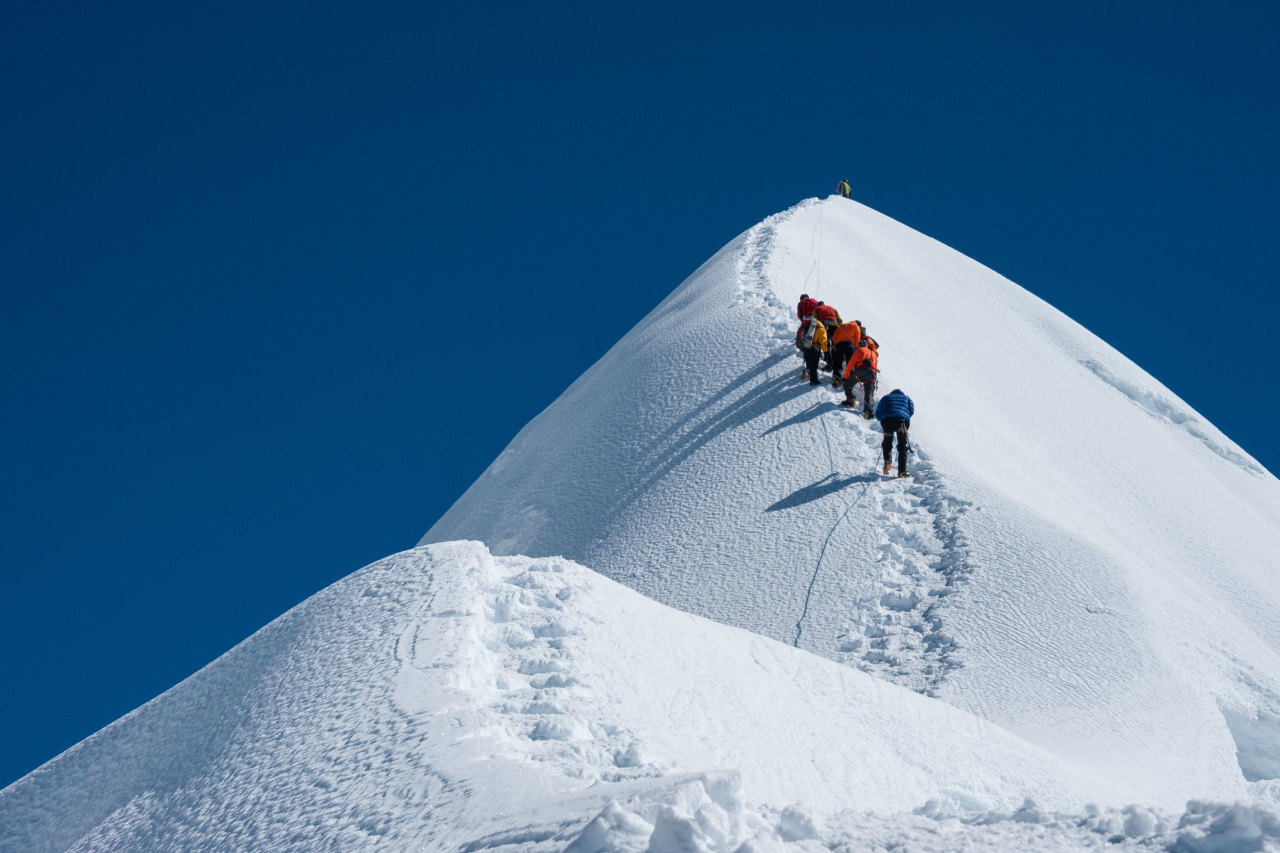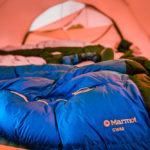Our Q&A-style tips on how to climb Denali, gathered from the many questions asked by our readers and followers
Whenever I get back from a big climb, I invariably receive an array of questions about the expedition via email and social media. As usual, I’ve collated them all below in a detailed Q&A that includes all my tips on how to climb Denali. If I’ve missed anything, please do get in touch.
How high is Denali?
At 6,190m (20,310ft), Denali in Alaska, USA, is the highest peak in North America and the third highest mountain of the seven summits.
Denali was believed to be 6,194m (20,320ft) from the 1950s until 2013, when a report gave its elevation as 6,168m (20,237ft). However, in 2015, the United States Geological Survey measured Denali again and determined the mountain’s now widely accepted height of 6,190m (20,310ft).
Why did it used to be called Mount McKinley?
The name Denali comes from Koyukon, a traditional Native Alaskan language, and means ‘the tall one’. It had been used for generations until 1896 when a gold prospector began referring to the mountain as Mt McKinley after William McKinley, a presidential candidate at the time.
After McKinley became president and later assassinated, Congress formally recognised the name in 1917 even though McKinley had never visited Alaska. After decades of petitioning by the Alaska Legislature, supported by many Alaskans, mountaineers and Alaska Natives, in 2015, President Obama officially changed the name back to Denali.
Did you climb Denali with a guide?
Yes, I joined the American Alpine Institute (AAI) on a guided climb via the West Buttress. As I am based in the UK, I booked via Jagged Globe who organised international flights and advised on gear and other logistics. However, in hindsight, I would recommend booking directly with AAI and cutting out the middleman.
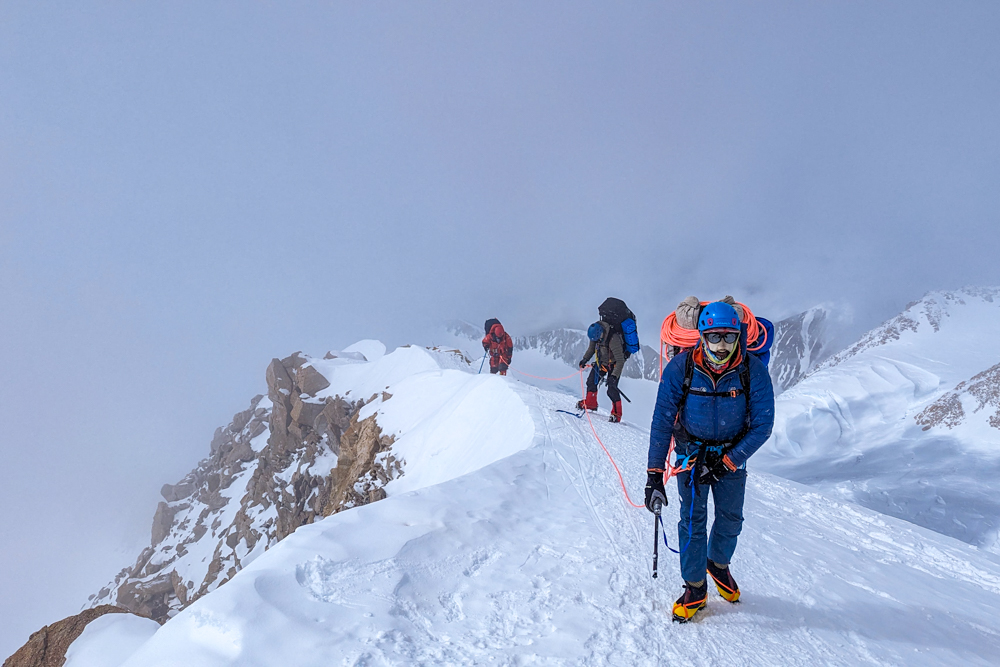
Can you climb Denali unguided?
You can climb Denali without a guide, but most climbers do use guides. It significantly increases your chances of success. It is also much safer to climb Denali as part of a guided team. While we were on the mountain, there were several accidents, including two deaths – all of them unguided climbers.
If climbing in a team, you will always be roped up to at least two climbers including a guide who will have considerably more knowledge of the terrain and conditions on the mountain. There will also be a support system in place in case of any issues as well as caches of spare tents and supplies at base camp and High Camp.
How many of your group made the summit?
Six members of our team made the summit. Just above Camp 1, a member of our team who had been struggling with nausea and stomach issues was forced to withdraw from the climb.
Then at Camp 2, one team member developed frostnip (an early sign of frostbite) in his fingers while another member decided against continuing with the climb. Both had to go down the mountain.
How do clients go down if they can’t continue?
Clients must always be roped to a guide and usually at least one other client. As such, if a client must descend the mountain then they will need to descend roped to a guide. They are escorted to base camp where a plane is arranged to take them off the mountain to Talkeetna where they will be met by a member of the AAI support team.
It will depend on the situation and where on the mountain the issue arises but in our case, three members of our team (one guide and two clients) descended with a client to base camp from just above Camp 1. They then caught our team up at Camp 2. While this does demand extra labour from the clients, it is part and parcel of the culture on Denali.
Later, when two more clients needed to descend from Camp 2, they were escorted by one guide down to base camp. He then spent three days ‘hitching’ rides on other expeditions’ rope teams to catch us up at Camp 3.
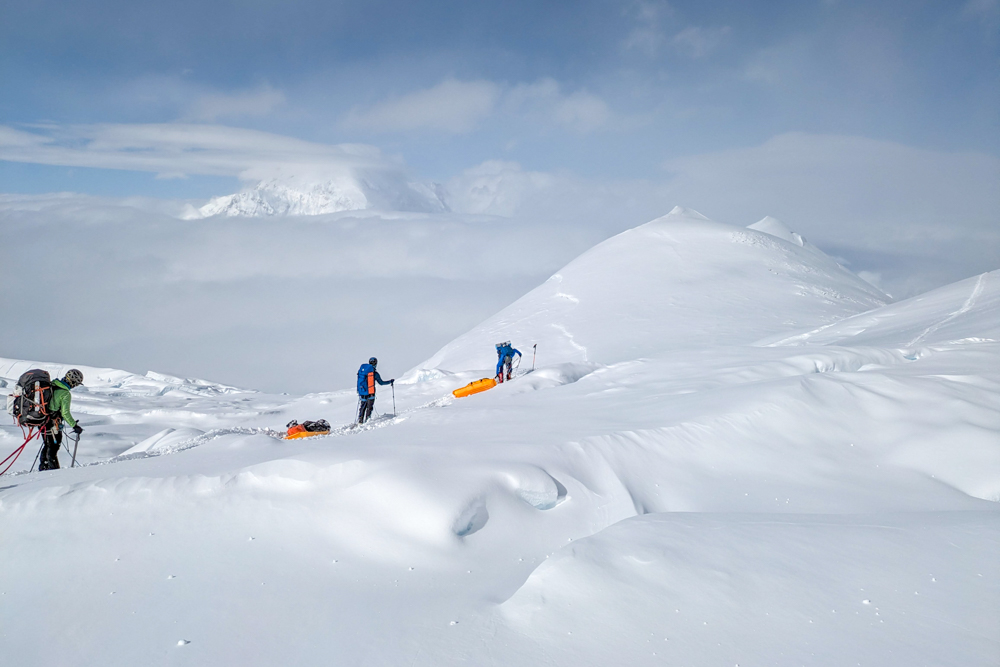
What is the summit success rate on Denali?
The summit success rate for the 2024 Denali climbing season was 52%, meaning just over half of climbers made the summit. The National Park Service (NPS) has been collecting data on climbers on Denali since 1903. It publishes annual mountaineering statistics and reports, including summit success rates. The 2024 climbing season on Denali has now closed and the NPS has released the following statistics.
| 2024 Denali climbing season | |
|---|---|
| Registered climbers | 974 |
| Climbers currently on mountain | 0 |
| Completed climbs | 974 |
| Number of summits | 511 |
| Summit percentage | 52% |
The following table shows the results of all registered climbers, across all routes over the last five years. There was no climbing in 2020 due to the pandemic.
| Year | Climbers | Summits | Success rate |
|---|---|---|---|
| 2018 | 1,114 | 496 | 45% |
| 2019 | 1,226 | 791 | 65% |
| 2021 | 1,007 | 530 | 53% |
| 2022 | 1,127 | 780 | 69% |
| 2023 | 1,017 | 308 | 30% |
| Total 1903-2023 | 49,818 | 25,835 | 52% |
This next table shows results for the West Buttress route – the most popular – over the last five years.
| Year | Climbers | Summits | Success rate |
|---|---|---|---|
| 2018 | 1,060 | 463 | 44% |
| 2019 | 1,145 | 726 | 63% |
| 2021 | 943 | 490 | 52% |
| 2022 | 1,070 | 745 | 70% |
| 2023 | 961 | 290 | 30% |
| Total last 5 years | 5,179 | 2,714 | 52% |
This year, five of the six AAI teams reached the summit. However, it’s worth remembering that doesn’t mean all climbers did. Our team reached the summit but only six of the nine climbers summited.
Generally, guided groups tend to have a better success rate. AAI states that all guided groups have a success rate of 59% while AAI’s success rate over the last 12 years is 77% for individuals and 85% for expeditions.
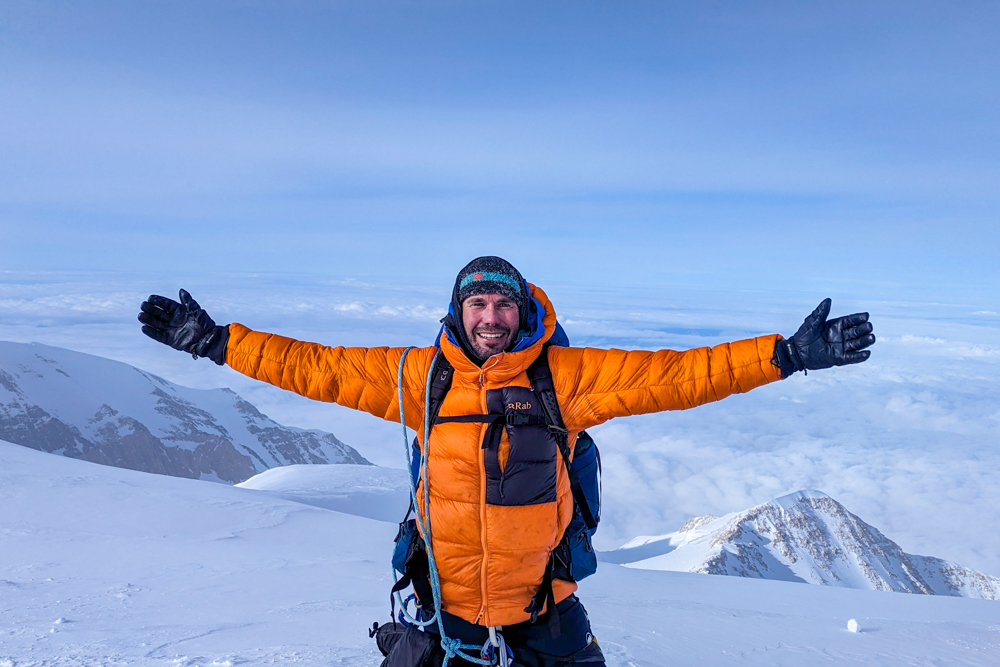
How long does it take to climb Denali?
Our itinerary was 21 days although we completed the climb in 19 days. My itinerary is below, although it comes with a certain degree of flexibility depending on the conditions on the mountain. There are four additional days built in as reserve days in case of bad weather. We used two of these during our ascent and two remained unused.
It should also be noted that if the itinerary changes for any reason, then additional accommodation is not provided. We summited earlier than planned and financed the extra nights in the hotel in Anchorage at around $150 USD per night.
| Day | From/to | Altitude |
|---|---|---|
| 1 | Drive to Talkeetna; fly to Kahiltna Airstrip (base camp) | 2,200m |
| 2 | Move to Camp 1 | 2,350m |
| 3 | Load carry to cache below Camp 2 | 3,000m |
| 4 | Move to Camp 2 | 3,350m |
| 5 | Back carry from below Camp 2 | 3,350m |
| 6 | Rest day at Camp 2 | 3,350m |
| 7 | Load carry to cache around Windy Corner | 4,100m |
| 8 | Move up to Camp 3 | 4,330m |
| 9 | Rest day at Camp 3 (snowed in) | 4,330m |
| 10 | Back carry from Windy Corner | 4,330m |
| 11 | Rest day (hike to ‘End of the World’) | 4,330m |
| 12 | Load carry to cache at the top of the fixed ropes | 4,900m |
| 13 | Rest day at Camp 3 | 4,330m |
| 14 | Move up and establish Camp 4/High Camp | 5,245m |
| 15 | Back carry/rest day at Camp 4/High Camp | 5,245m |
| 16 | Summit day | 6,100m |
| 17 | Descend to Camp 3 | 4,330m |
| 18 | Descend to Kahiltna Airstrip (base camp) | 2,200m |
| 19 | Return flight to Talkeetna | n/a |
| 20 | Contingency day | n/a |
| 21 | Contingency day | n/a |
How much does it cost to climb Denali?
Prices from AAI start at $11,995 USD and include all accommodation, breakfast and dinners on the climb, three guides on the mountain and ground transport. You have to supply your lunches.
Once you factor in the cost of the gear, flights, food, additional accommodation and any extra training you may require, climbers should budget to spend between $15,000 and $20,000.
How much does the gear cost?
This is difficult to be exact as I had a lot of gear beforehand, built up over years – decades – of trekking and climbing. That said, I estimate that if you were starting from scratch, it would probably total around $5,000.
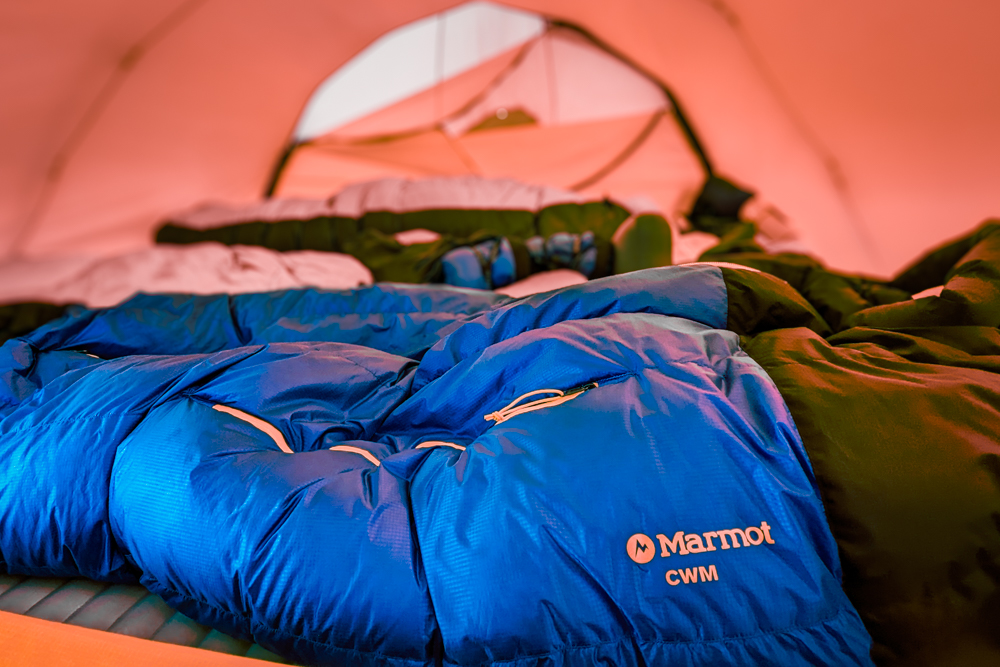
However, no one should even think about climbing Denali without relevant experience so by default you will have amassed a certain amount of gear already. I had to upgrade my sleeping bag and a couple of other pieces of kit. Read the following articles for more information on gear:
What experience should I have?
Any reputable guiding company won’t let you onto the mountain unless you have considerable expedition-style experience that includes being at high altitudes and camping on ice for extended periods. If you are unsure, contact AAI (or your guiding company) and ask them for advice.
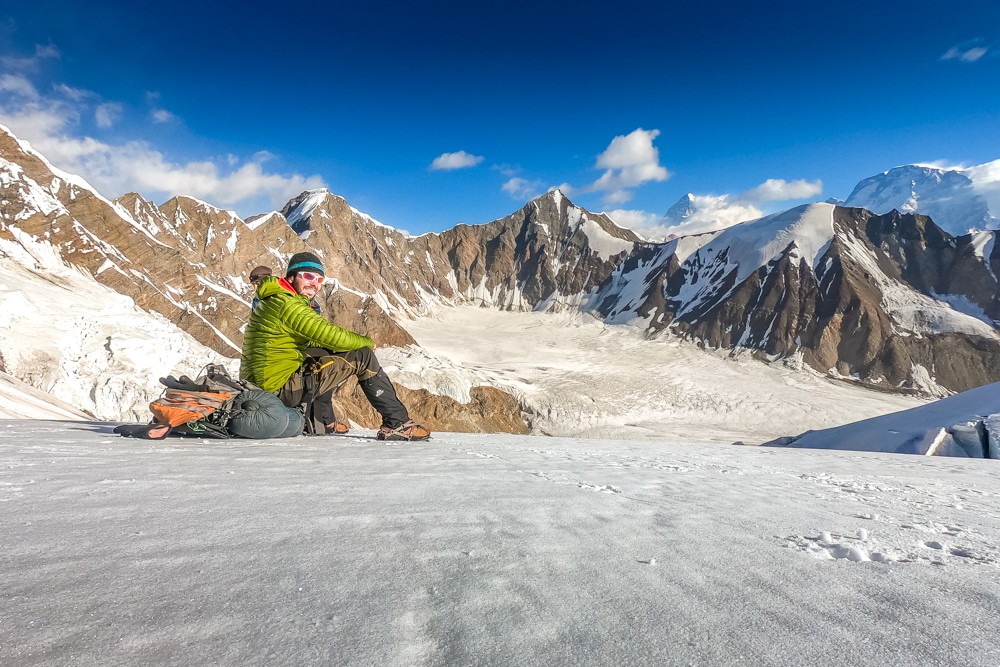
Denali was my fourth mountain of the seven summits after Aconcagua, Elbrus and Kilimanjaro. Added to that, I have also completed long and/or high-altitude treks such as the Arctic Circle Trail, Everest base camp and K2 base camp amongst others. K2 base camp included almost two weeks of camping on a glacier which was arguably the best preparation for a mountain as cold as Denali. I have also completed two winter mountaineering courses in Scotland.
For more information, read my blog post Climbing the seven summits: a route to the top.
Do I need technical mountaineering skills?
If you’re planning to attempt Denali – on any route including the West Buttress – then you will need to have some mountaineering skills. You will need to know how to use crampons and an ice axe, tie a range of climbing knots, take part in crevasse rescue, orientate yourself in the outdoors, pitch tents on snow and use an ascender device (jumar).
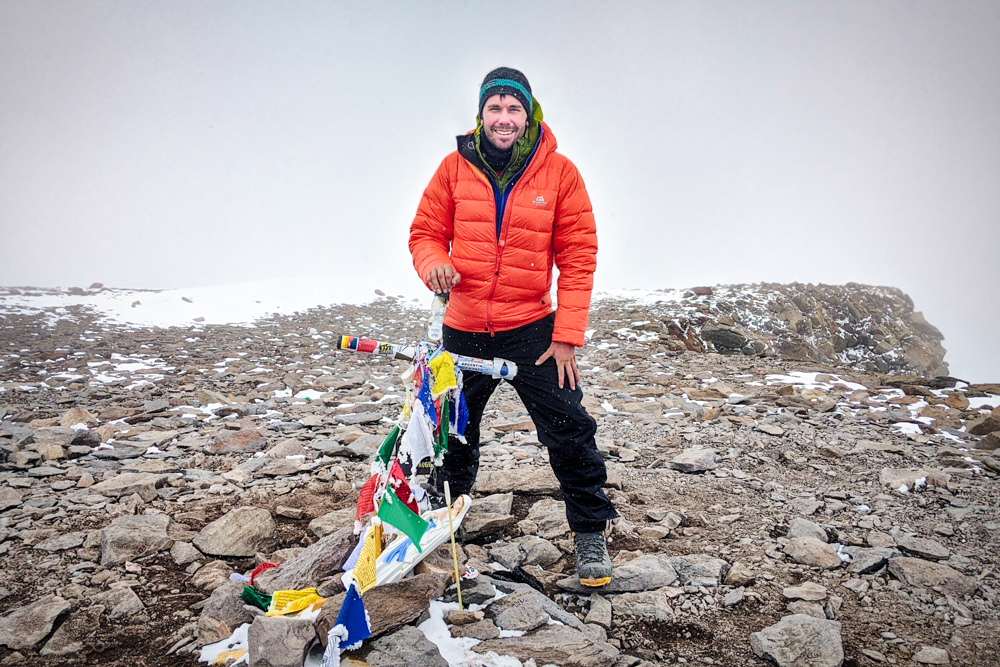
AAI specifies that climbers “need to have an intermediate level of glacier travel skills, glacier travel experience, experience with backcountry winter camping and be in excellent cardiovascular and physical condition.”
Jagged Globe stipulates that climbers will need to be able to demonstrate the following to join an expedition:
- Completed routes of Scottish Grade II or higher
- Have experience in glacier travel and have completed Alpine routes of PD or equivalent
- Are well-organised, self-reliant and have taken part in previous expeditions
- Can carry a 20kg pack and pull a 40kg sled at the same time
- Pack and prepare their own snack/lunch foods
- Participate actively in a crevasse rescue
What training did you do?
I spent 18 months training for Denali following a 24-week expeditionary mountaineering training plan tailored for those planning to attempt high-altitude summits such as Denali or Everest. The plan is based on the best-selling book Training for the New Alpinism.
Written by professional climber, mountain guide and Patagonia ambassador Steve House and US Nordic ski coach Scott Johnston, the book is widely regarded as the best training manual for climbers and alpinists. The program focuses on building aerobic endurance and strength over three eight-week stages. For a deep dive, read my blog post How to train for mountaineering: a seven-step plan.
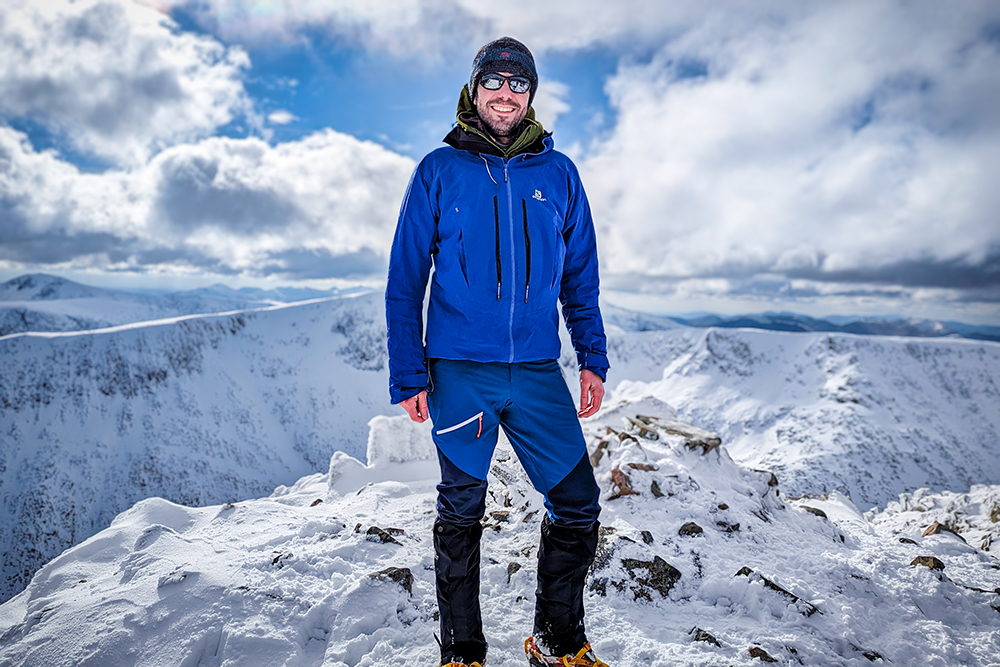
As mentioned, I also completed mountaineering courses in Scotland. Several years ago, I completed a five-day Introductory Winter Mountaineering with Jagged Globe. In February this year, I completed a more advanced five-day Winter Mountaineering course – again with Jagged Globe – and tacked on a day of private tuition on crevasse rescue. If you’re based in the US, AAI runs similar courses.
How hard is the climb?
In a word, hard! Denali is an extremely challenging climb. In our team, we had a triathlon athlete, a veteran of the Marathon des Sables and an Everest summiteer returning to Denali for his second attempt. They all said – as have I – that climbing Denali was the hardest thing they have done.
Denali may not be as high as some Himalayan or Andean peaks, but it is a brutally cold mountain that requires significant endurance and fortitude. Climbers must carry heavy loads throughout, particularly at the beginning of the expedition where they must carry a 20kg backpack and haul a 40kg sledge over a crevasse-strewn glacier to Camp 1. Packs do get lighter the higher you climb, but the route gets steeper, more demanding and colder.
The notoriously stormy and unpredictable weather on a mountain located at 63° North – just 3° degrees south of the Arctic Circle – only makes it even tougher. Underestimate Denali at your peril.
Is climbing Denali dangerous?
In a word, yes. The NPS publishes an annual medical summary and every year, there are usually deaths on the mountain along with multiple medical emergencies and evacuations. During my climb, we were involved in two rescues and were in the vicinity when two deaths occurred on the mountain. Three members of our team – including me – developed frostnip (an early sign of frostbite) in our fingers.
Dangers include highly crevassed glacier travel, snow and ice climbing up to 40° in steepness, extended periods of Arctic conditions including temperatures as low as -40°C (-40°F), avalanche danger and, of course, altitude sickness. There is also considerable risk of falling, particularly on the Autobahn, a steep snow and ice slope above High Camp, which has been the scene of more fatalities on Denali than any other part of the mountain.
Below is a breakdown of the diagnoses from the 2023 rescue season from the NPS website:
- Traumatic Injury – 11 cases (includes 1 facial laceration, 3 shoulder injuries, 1 traumatic brain injury, 1 fractured ribs, 1 neck injury, and 4 patients with various musculoskeletal injuries)
- Frostbite – 11 cases
- Medical – 6 cases (includes 2 hypothermia, 1 diverticulitis, 1 spontaneous pneumothorax, 1 possible case of anxiety, and 1 case of anaphylaxis)
- High Altitude Cerebral Edema – 3 cases
- High Altitude Pulmonary Edema – 3 cases
How does it compare to the other seven summits?
Denali was my fourth mountain of the seven after Aconcagua in South America, Elbrus in Europe and Kilimanjaro in Africa. I found it harder than all three. It may be the third-highest of the seven but it is generally considered to be the second-hardest mountain of the seven summits both in terms of technicality and conditions.
| Summit | Continent | Altitude | Technical difficulty |
|---|---|---|---|
| Everest | Asia | 8,848m (29,029ft) | Intermediate |
| Aconcagua | South America | 6,961m (22,838ft) | Easy |
| Denali | North America | 6,190m (20,310ft) | Intermediate |
| Kilimanjaro | Africa | 5,895m (19,341ft) | Easy |
| Elbrus | Europe | 5,642m (18,510ft) | Easy |
| Vinson | Antarctica | 4,892m (16,050ft) | Intermediate |
| Puncak Jaya | Oceania | 4,884m (16,024ft) | Advanced |
While Denali may not be as high as Aconcagua, it is more technical, colder and a more hostile environment. There are also no porters or mules on the mountain so all of your gear has to be hauled yourself either by backpack or sledge. Base camp is also far more basic compared with Aconcagua where there are communal dome tents, toilets, shops and even an art gallery – none of which can be found on Denali!
What was the hardest part?
The first day on the mountain is a real baptism of fire. It’s the only day when you’re carrying a completely full load – around 60kg – and it can be blisteringly hot as you move up the glacier. That said, the days when you’re moving camp are generally more strenuous and, naturally, those days get harder the higher up the mountain you get. The move from Camp 3 to High Camp/Camp 4 is a long, tough day of climbing with a heavy pack.
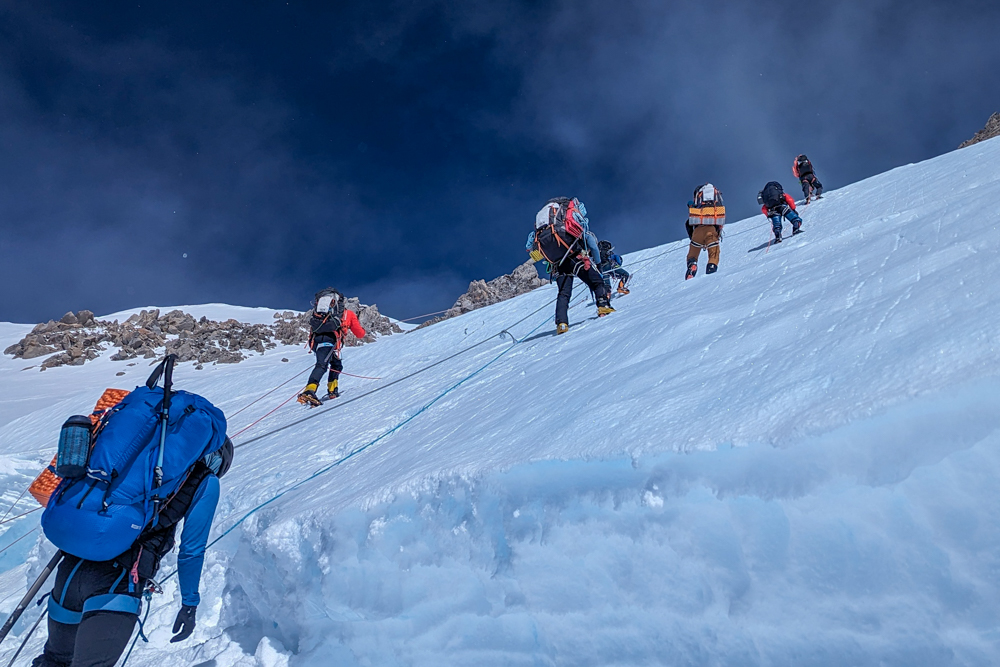
However, unsurprisingly, the summit day is the longest, hardest and most exposed day of the entire climb. There are several steep, exposed climbs, including up the infamous Autobahn to Denali Pass, and temperatures can plummet to -40°C (-40°F). It’s not unusual for climbers to pick up frostbite injuries to the hands or face on the summit day.
How cold does it get? What is the weather like?
Denali is one of the coldest and windiest places in the USA and has some of the most severe temperature swings in the world. When the wind is calm and the sun is out, it can reach upwards of 30°C (86°F). At the higher camps, or when a northerly system moves in, the temperature can dip below -40°C (-40°F).
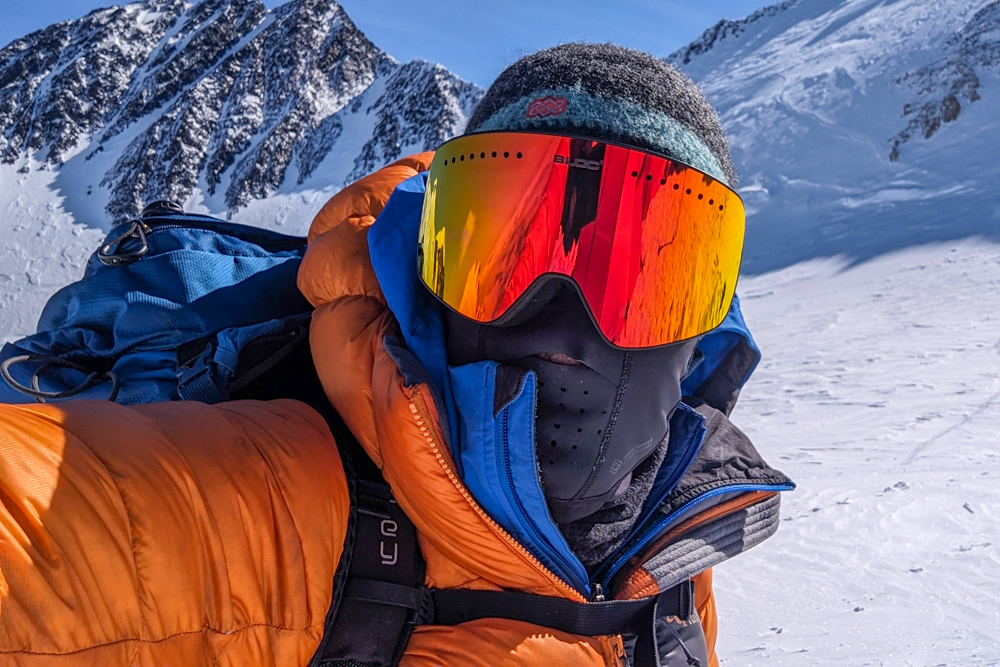
Wind is the biggest danger on Denali and climbers must be prepared to deal with storms and protect themselves and their camps from windy conditions. Even when temperatures are mild, wind chill can accelerate the frostbite process and wreak havoc on equipment and campsites. Winds over 160km/h (100mph) have been recorded on the Denali.
When is the best time to climb Denali?
The climbing season on Denali starts in late April and continues through the middle of July. Although it’s colder earlier in the season, May and June are considered the best times to climb as they can still offer milder temperatures with fewer crevasses. By late July, the lower glacier is more dangerous due to melting snow bridges over crevasses while planes may not be able to land at base camp.
Even at the best of times, climbers should be prepared for high winds, snow, ice and extremely low temperatures.
What should I pack?
I’ve put together a detailed Denali gear list. It contains everything I took with me including my sleeping system, footwear, mountaineering clothing, climbing equipment, luggage, food, electronics and personal items.
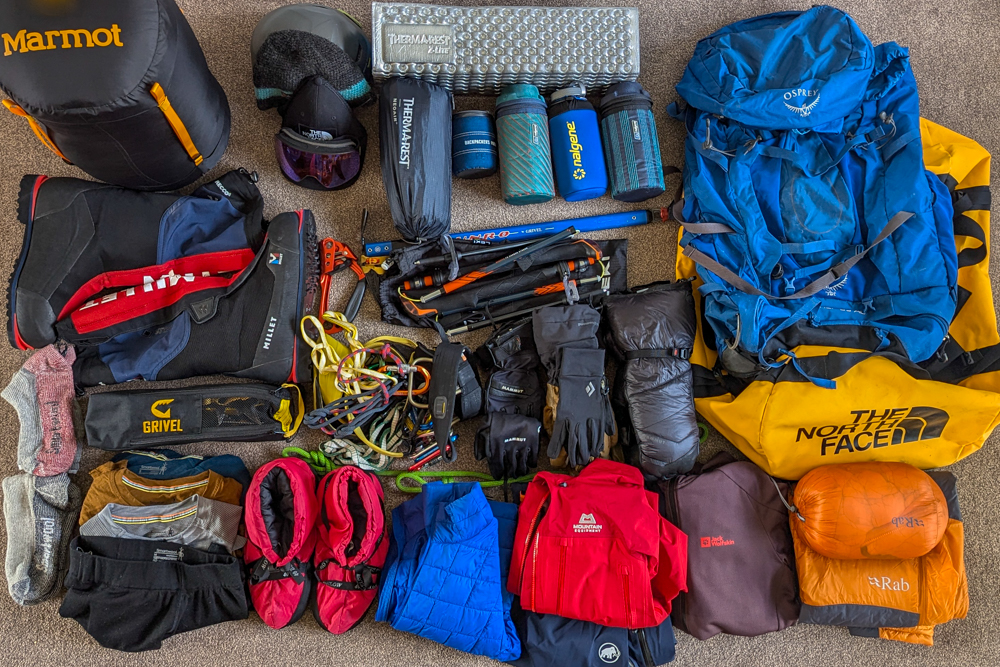
Can I buy/hire gear and clothes locally?
A handful of items are available to hire from AAI but I would always recommend buying your own where possible. Hire gear may not always be in the best condition or available in your size.
On arrival in Anchorage, Alaska, you will have the opportunity to visit an outdoor store in case you’re missing any gear. The city has an enormous REI as well as the excellently-socked Alaska Mountaineering and Hiking store.
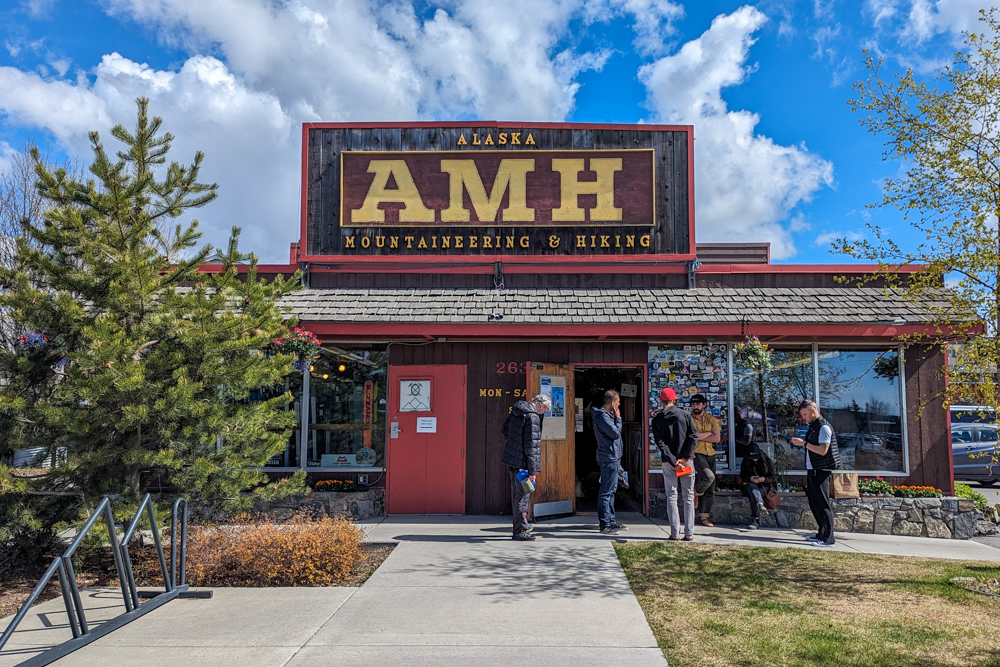
How do you go to the toilet?
The NPS operates a ‘pack in-pack out’ policy on Denali, meaning expeditions must carry their human waste off the mountain. All expeditions on Denali are supplied with several Clean Mountain Cans (CMCs) for climbers to use. Our team of 12 was supplied with 14 CMCs for the duration of our climb. CMCs are lined with a compostable bag and when full, are cached and then collected on the way down the mountain, usually at campsites.
At every camp, the team digs out a toilet area for privacy complete with a ‘urinal’ and an area to use the CMCs. The system works well and CMCs are easy to use and hygienic. Only human waste and toilet tissue (no wet wipes) can go into the CMCs. Make sure you pack hand sanitiser and enough toilet roll to last the expedition.
What is base camp like?
Base camp on Denali is a simple but spectacular affair. The camp is positioned alongside the airstrip on the southeast fork of Kahiltna Glacier in the lee of a string of jagged peaks.
There are no facilities at the base camp other than a communal ‘toilet’ dug into the snow where climbers can use their CMCs. There is a park ranger stationed at base camp who manages the flights coming in and out of base camp taking climbers on and off the glacier as well as coordinating rescues and medical support for climbers.
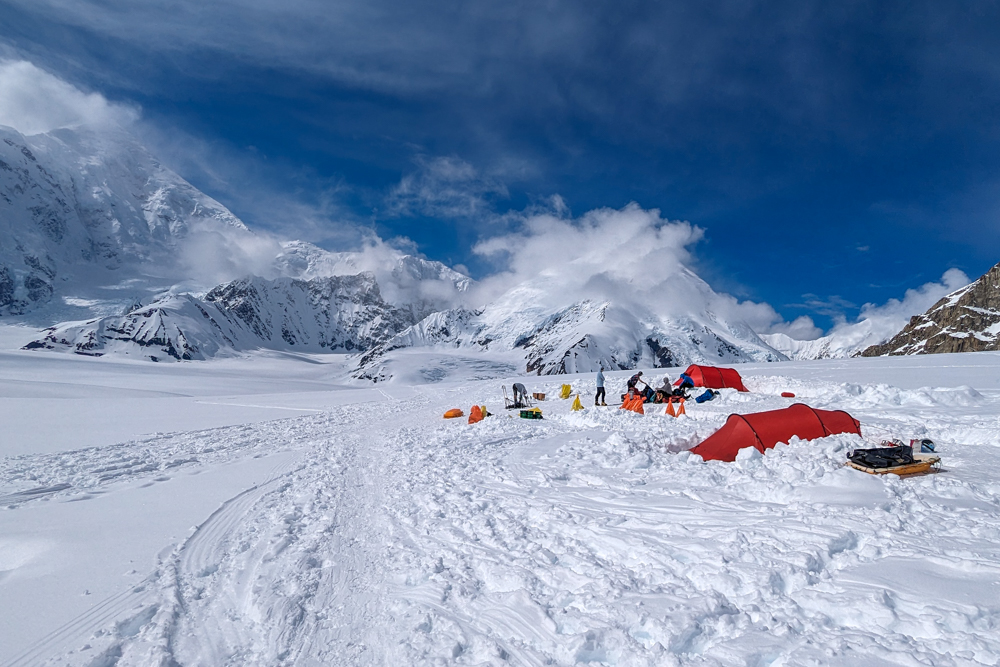
What is the flight onto the glacier like?
The 45-minute flight from the frontier town of Talkeetna onto the Kahiltna Glacier is sensational. The plane takes off over the Alaskan backcountry before entering the Alaskan Range where it weaves between the giant peaks. We had calm flights with no hold-ups but it’s not unusual for flights to be delayed due to bad weather. The expedition before us spent a day at Talkeetna waiting for a weather window to fly onto the glacier.
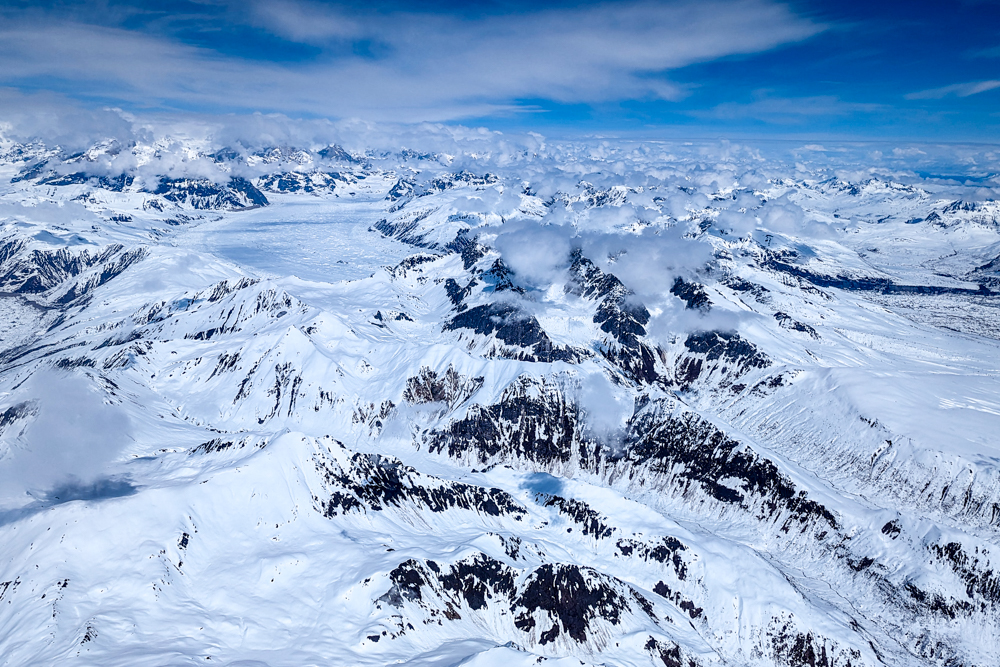
What time did you get up on summit day?
Summit days on high mountains usually mean a frightfully early start – often in the middle of the night – to make use of the daylight and best conditions. However, the one advantage of climbing on a mountain as far north as Denali is that it never gets dark at that time of year so our summit day wasn’t dictated by the daylight. As such, we got up at the civilised time of 8am and set off for the Autobahn at around 11am. Summit days regularly last as long as 12 hours, sometimes longer. Ours was around 12.5 hours but we were delayed as we were involved in a rescue during our descent.
Where do you get drinking water?
All drinking water comes from melting snow. This is done by the guides in the mess tent. Water is boiled for hot drinks in the mornings and evenings and climbers are supplied with up to four litres of drinking water a day.
What is the food like?
The food was excellent considering where we were. All tents and cooking facilities on the mountain are provided. The guides prepare the
breakfast and dinners, which are taken in the mess-tent. Meals generally had a high fat and carbohydrate content, necessary due to the extreme demands of this climb.
Breakfast typically consists of granola, cereal or oatmeal on move days (moving camps) and at high camp when cooking is difficult. On rest days, meals can include pancakes, breakfast scrambles or breakfast sandwiches. Dinner usually consisted of a heavy carb (pasta, rice, instant potatoes) and a protein source (chicken, pork or vegetarian equivalent) to help with recovery. At High Camp, where we don’t dig a mess tent, we ate dehydrated meals in our tents. Whatever was on the menu, we never went hungry.
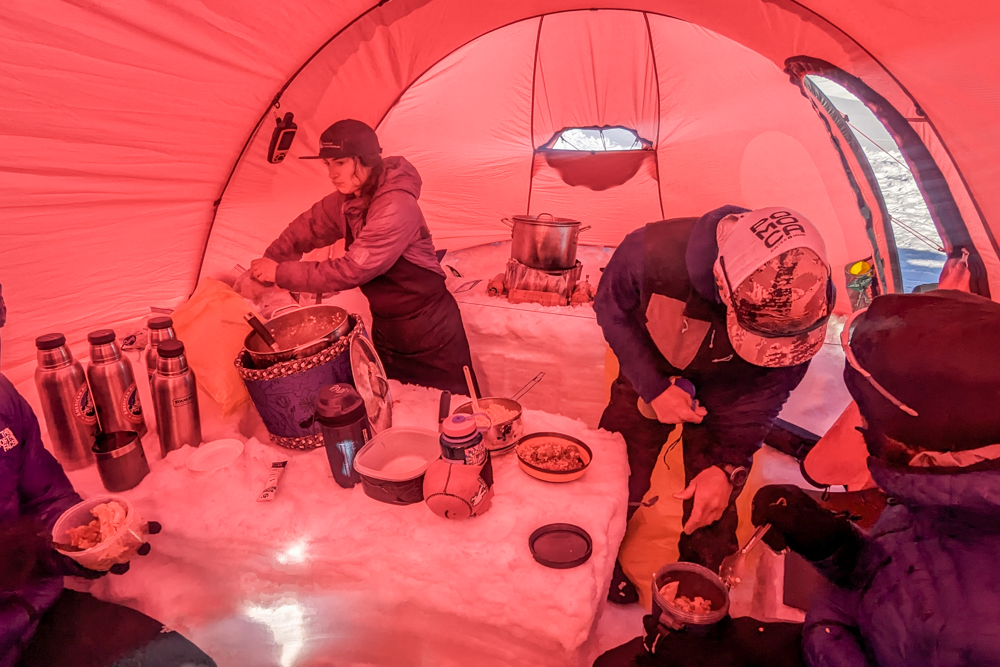
Are meals included in the price?
AAI provides breakfasts and dinners on this expedition but climbers must provide their lunches. Guidance on what to pack was sent but this largely comes down to your preferences. You should avoid packing any items that require preparation or hot water. The most important thing is to have a variety of food which you will want to eat. The total weight for all 21 lunches should not exceed 6.8kg (15lb).
Read my Denali gear list post to see exactly what I packed.
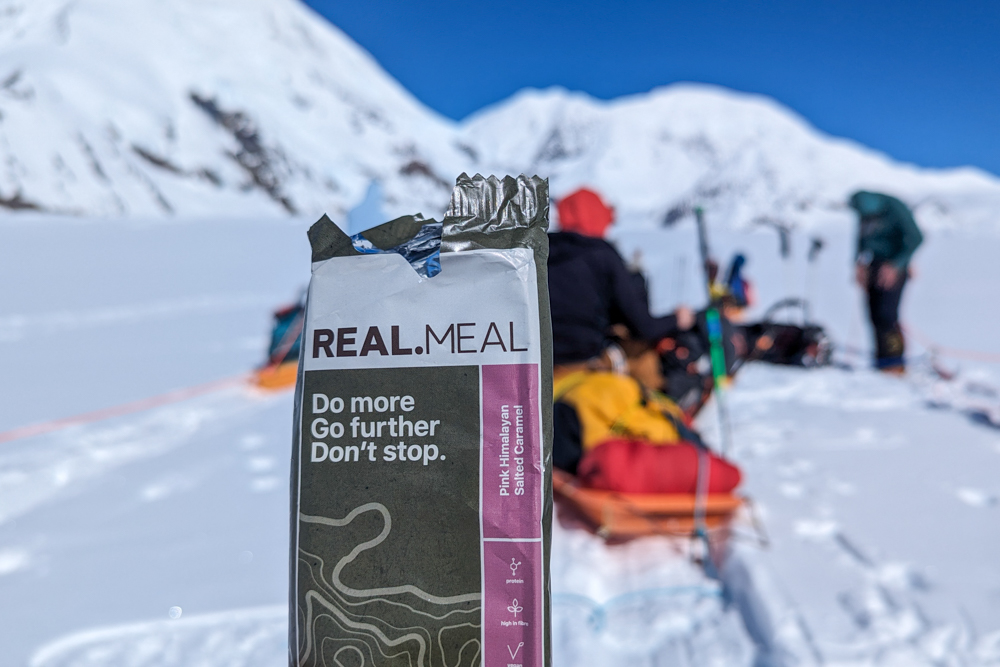
Can I take a shower during the climb?
No, there is no running water on Denali. Additionally, it’s not possible to melt water for washing. As such, it’s best to pack wet wipes to clean yourself with.
Is there phone signal or wifi available?
No, as soon as you take off from Talkeetna, there is no phone signal or wifi for the duration of the expedition. Some members of our team carried GPS messaging devices. The guides also carry devices which are solely for medical emergencies and receiving weather reports and cannot be used by clients.
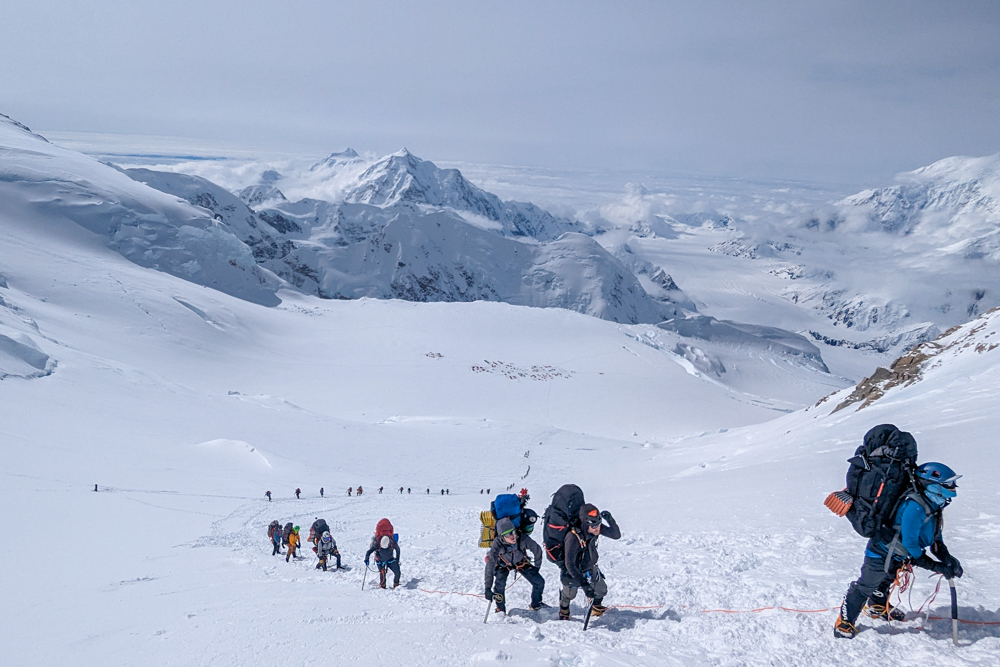
We recommend getting a Holafly eSIM for North America so you can stay connected to the internet on (the non-climbing portion of) your trip. We can offer our readers 5% off Holafly purchases. Simply use the code ATLASANDBOOTS at checkout.
Can I charge electronics during the climb?
The only way to charge devices on the mountain is by portable powerbank or by solar panels. Every climber carried a powerbank and we took four or five solar panels between the expedition to save on weight.
Are there any medical facilities?
Your guides will carry a comprehensive first aid kit and there are NPS rangers stationed at base camp and Camp 3 who have access to some medical resources and can coordinate rescues.
Do I need specialist insurance?
Yes, one of my most important tips on how to climb Denali is to make sure you select a travel insurance policy that has sufficient medical coverage. The policy must provide adequate cover for medical expenses (including those arising from COVID) as well as for the cost of search, rescue and repatriation.
I bought mine from the British Mountaineering Council. For Denali. You’ll need the ‘Alpine & Ski’ policy as it covers climbing Denali (West Buttress route only). For a different route, you will need the ‘High Alt & Remote’ policy.
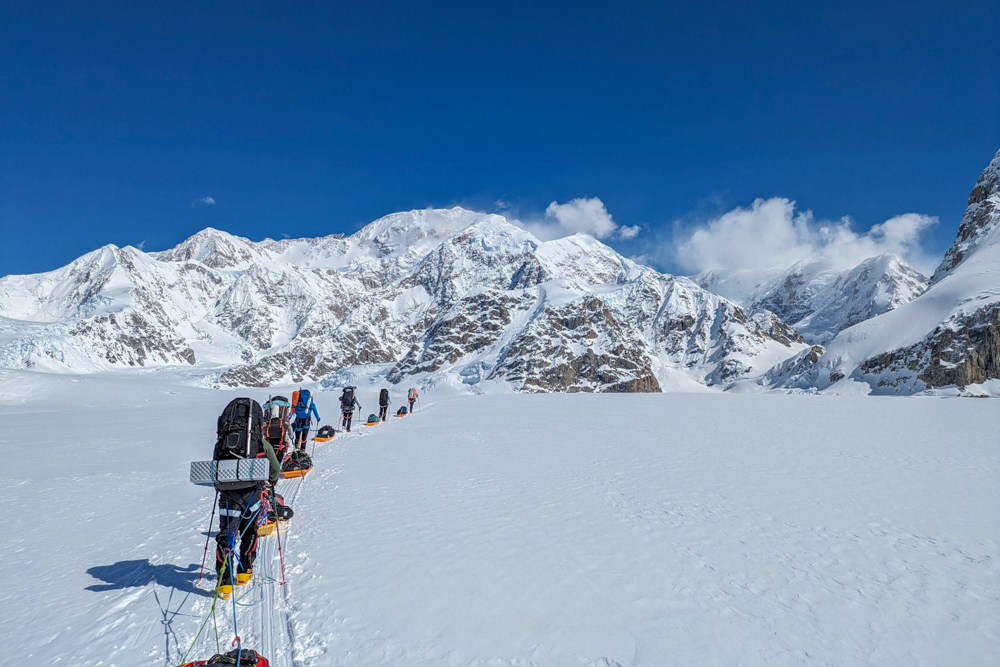
Should I take Diamox?
This is very much down to the individual. I have never taken Diamox and didn’t on Denali but I have been to high altitudes several times so I know what to expect. I do carry some with me in case I ever feel particularly bad.
The best advice I can give is what my guide gave me on my Everest base camp trek. Have some Diamox with you and take it as soon as you start to feel the pulsing headaches that are synonymous with altitude sickness.
He said it’s good to have some available at the higher altitudes – particularly when you sleep above 5,000m – so you can use it to aid a good night’s sleep.
What guidebooks do you recommend?
Harry Kikstra’s Denali: Summit of North America is widely considered the best guidebook available. The book mainly focuses on the West Buttress route used by 90% of climbers on Denali.
Which route did you take? Are there others?
We climbed via the West Buttress route, which 90% of all climbers on Denali follow. Below are the 2023 statistics for the various routes on Denali.
| Climbing Routes (Denali) | Climbers | Summits | Summit % |
|---|---|---|---|
| West Buttress | 961 | 290 | 30% |
| Cassin Ridge | 15 | 7 | 47% |
| East Face | 9 | 0 | 0% |
| Messner Couloir | 4 | 3 | 75% |
| West Rib | 9 | 0 | 0% |
| Upper West Rib | 19 | 8 | 42% |
| Combined Route Totals | 1,017 | 308 | 30% |
Do I need a permit?
Yes, all climbers are required to buy a Special Use Permit. The cost of a mountaineering permit for the 2024 season was $430. Climbers who are 24 or younger at the time their expedition begins are eligible for a $330 youth fee. In addition to the permit, each climber must pay the Denali National Park entrance fee of $15.
These fees are usually included in the price of guided expeditions but you will still have to complete an Application for Special Use Permit form which your guide company will advise you on how to fill in.
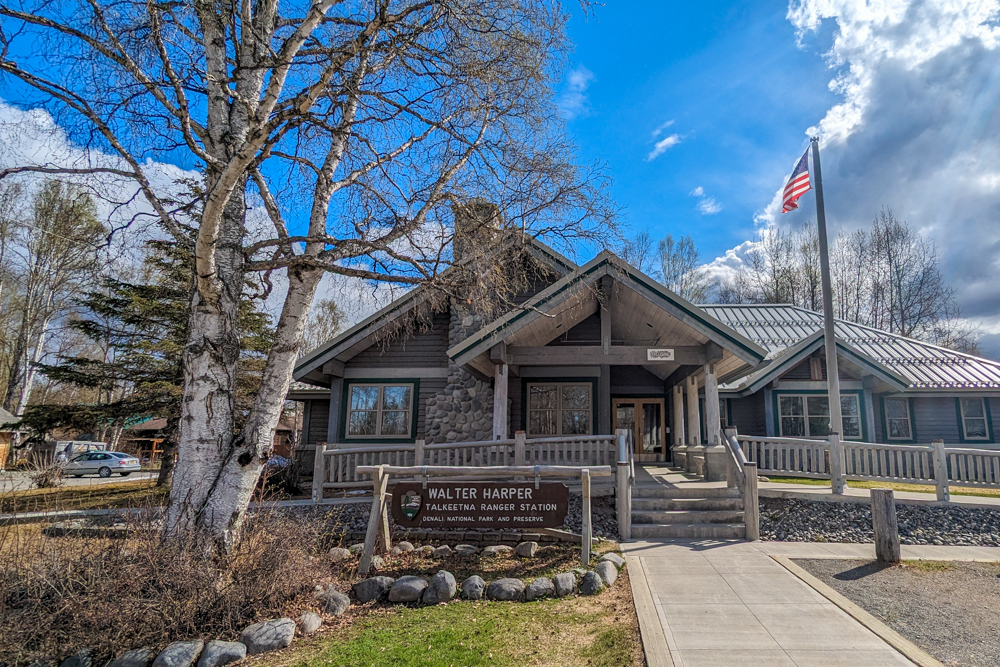
How much should I tip guides?
Guides in the USA are paid much better than their counterparts in many other parts of the world – Nepal, Pakistan and Tanzania for example – so tips are not expected to make up part of their income.
That said, showing your appreciation in the form of a tip will go a long way. Allow between $500-800 per climber which will then be pooled and split among all of the guides and staff who assisted your climb.
How many days did you spend in Anchorage before?
Ideally, you would be as rested as possible before you start the climb but if you’re travelling internationally, this can be hard. The itinerary only includes two nights in Anchorage before the climb. I recommend getting there at least a day earlier to give yourself a bit more time to adjust and get over any jetlag.
Additionally, as I was flying from London, UK, on an early flight, I booked a night at an airport hotel. I stayed at Radisson RED London Heathrow, just a 5-minute drive from terminals two and three. The chic hotel boasts a fabulous bar and restaurant as well as a relaxed lounge area, while the rooms are large, comfortable, stylish and most importantly, quiet.
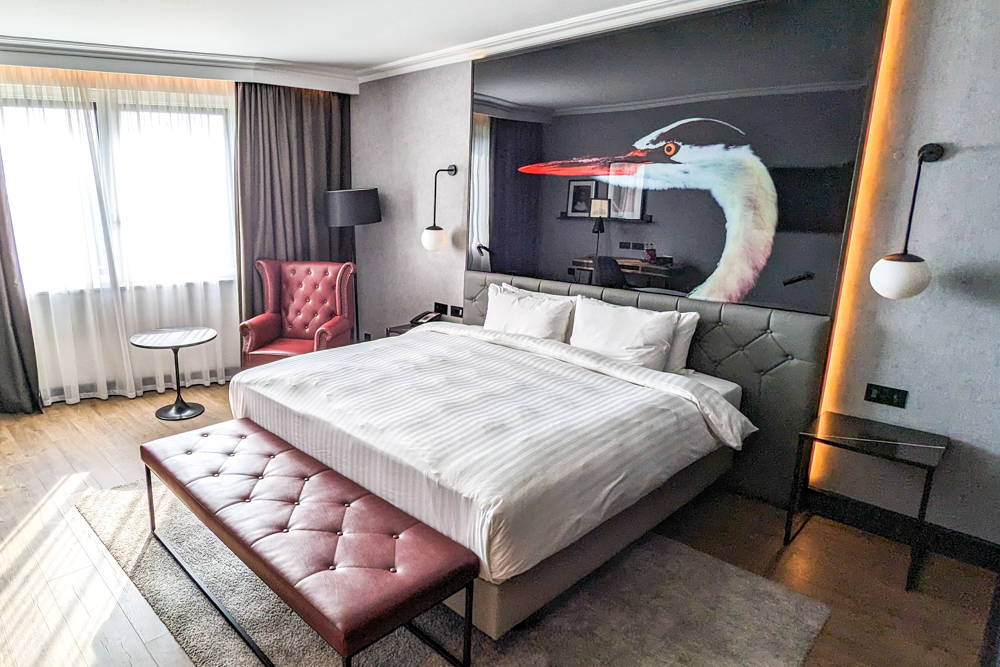
How did you get to Alaska?
I flew to Alaska with British Airways and Alaska Airlines via Seattle (outbound) and Portland (inbound). Book flights via Skyscanner for the best prices.
Do I need a visa?
To enter the USA, most nationalities will need to apply for an ESTA at least 72 hours before travel. The fee is currently $21 USD.
Enjoyed this post? pin it for later…
